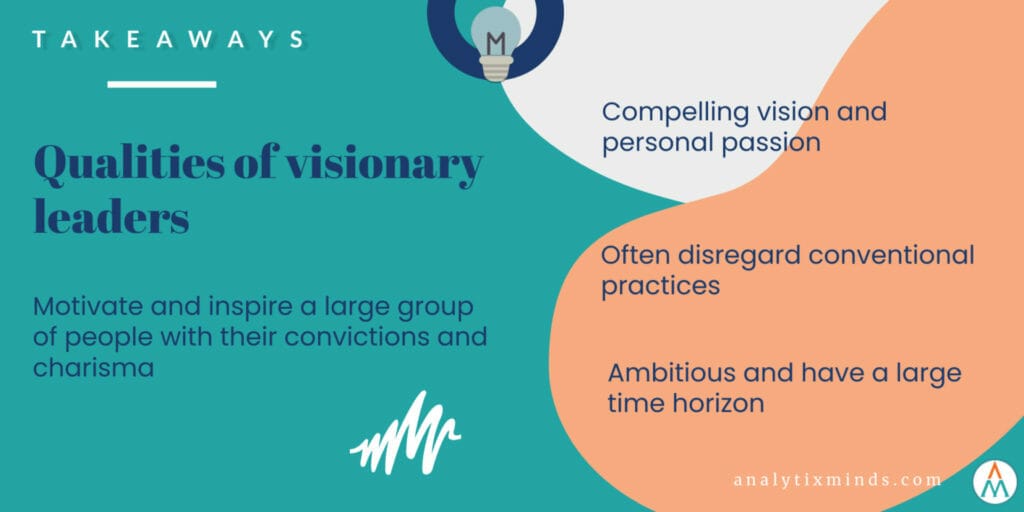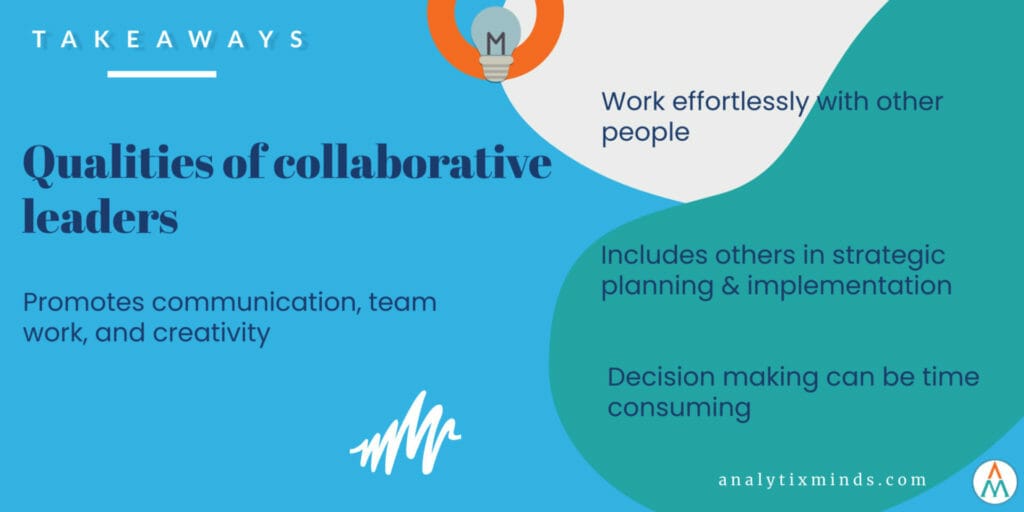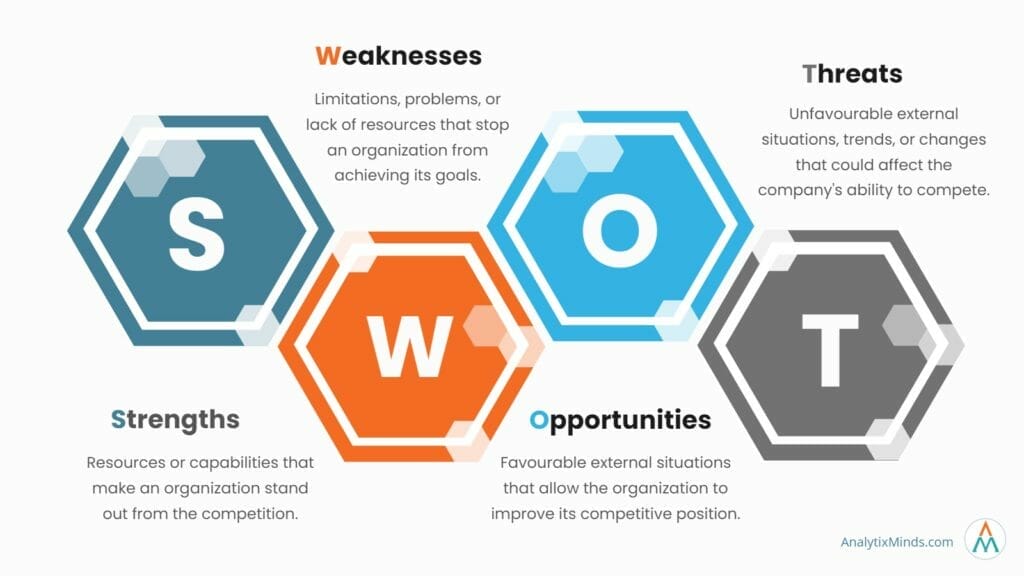Not in the mood to read? Check out the summary video below.
Global trends and technological disruption present new leadership challenges. The market is constantly changing, so you must adapt. Leaders in agile organizations are change-oriented and willing to make transformational changes. That’s where strategic leadership comes in.
How do you define strategic leadership styles? Who qualifies as a strategic leader? Let’s start by defining “leadership.”
A leader is someone who has the authority and power to guide and direct others. Leadership entails more than just managing people. Strategic leadership additionally involves guiding and directing the organization’s overall goals and vision.
We’re going to look at the three different styles of leadership that are most successful in today’s business world.
Watch this video for a quick summary of the article.
The strategic leader is the individual who, whether in a leadership or managerial position, deliberately explores ways to develop and apply strategic insights. They persuade others to take action by appealing to their emotions. Also, get buy-in, dedication, and support from everyone.
An organization can flourish by developing the right strategies, hiring the right people, and creating a positive culture. However, there can be no winning strategies without bold leadership. You can make a grand strategy, but you’ll need skilled leaders to make it happen.
Like a blacksmith who will hammer a metal piece over and over, leaders should figure out what’s wrong with their assigned areas and hammer away. First, they need to identify misaligned parts and then fix them. Along the way, they’ll fill in the gaps in the system or project.
Businesses with fewer strategic leaders are less likely to succeed than those with many. So let’s take a closer look at the strategic leadership styles. And also the characteristics of each style.
What is strategy?
There’s more to strategy than just a plan. It’s a series of steps and processes that will achieve your goal when put into motion. If you’re familiar with military strategy, you know what I mean.
A strategy is the overarching plan of attack that allows for some flexibility. It also helps you anticipate any obstacles you might face. Strategy requires more than just a plan, so it’s often referred to as a form of art.
There are many ways to define strategy. Some define it as a single plan to accomplish a goal, but it is so much more in reality. For success, any strategy requires the right kind of strategic thinking, planning, implementation, agility, and foresight.
Why is strategic leadership important?
Two of the critical challenges any organization has are how to come up with strategic insights and how to develop those insights into strategic action plans. Strategic leadership is critical because it ensures that the organization has a clearly defined strategic roadmap based on its vision and long-term goals. It ensures the continuous growth of the organization. It also helps with employee engagement to align their personal goals with those of the organization. This can help foster company culture and innovation.
A leader has a couple of options in ensuring strategic insight drives a strategy. You can develop a clear vision and achieve it through a well-structured and defined strategic framework. The less structured process is to develop strategic plans on the fly, mainly based on day-to-day experience. In reality, strategic leadership seeks to strike a balance between these two extremes.
Strategic leadership involves finding what you can do well in your organization to differentiate yourself from your competitors. It requires a more creative approach than simply looking for obvious solutions. Leadership plays a critical role in the future growth of an organization.
Difference between operational leadership versus strategic leadership
What’s the difference between operational leadership and strategic leadership? Operational leadership is about solving problems and finding solutions to operational issues and challenges. You don’t have time to think about the big picture, and how your actions affect the organization long term. You just have to keep things moving forward by solving the problems right in front of you.
Operational leaders monitor performance, manage constraints, and ensure that employees know what needs to be done. In contrast, strategic leadership involves creating an organization’s overall vision and achieving it. As a result, leaders may not be too heavily involved in putting out day-to-day fires.
The difference between a strategic and tactical leader is that one looks at the big picture while the other focuses on today’s tasks.
Short Leadership Quiz
Find out your strategic leadership insights with our short strategic leadership quiz.
Top 3 Strategic leadership styles
The authors of the book “Leading with Strategic Thinking” have identified the strategic leadership types that help drive strategy. The classification is based on how a leader gains insights and drives change.
These strategic leadership types are not mutually exclusive. In practice, they frequently blend in the face of the complexity of real-world situations. Although every leader has a preferred or dominant leadership style, circumstances may persuade them to test different styles to reach their goals.
- Visionary
- Directive
- Collaborative

Visionary leadership style
The visionary or transformational strategic leadership style can motivate and inspire a large group of people. These leaders are charismatic and controversial. People either love them or hate them. Regardless, they tend to stand out because of their convictions and how confident they appear about their ideas. It is these leaders who can find ingenious solutions and also ignore conventions outright. We are inspired by their extraordinary ability to dream higher and think bigger.
They usually stand out among their peers, so they tend to be in the spotlight. People are drawn to new ideas because they add excitement to a stale environment. Visionary leadership is a combination of a compelling vision and personal passion.
Leaders like these are ambitious and have an expansive time horizon. Their worldview usually guides their behaviour. On some issues, they can be equally narrow-minded depending on their beliefs. They are also not afraid to fail. They understand they will make mistakes. However, these mistakes will lead to better solutions. So, visionary leaders consider different options and don’t worry about failure.
Visionary leaders identify the organization’s long-term direction and communicate it to its members. They usually do this effectively, so all members get on board. They inspire us to dream big and think big. Our minds are blown by their ability to predict what people will need in the future.
These types of leaders are ideal for teams that have a lot of momentum but need a huge jolt of inspiration to take the next step.
Henry Ford is one of the most visionary leaders in American history. As a business leader, he saw the future before most people. In fact, he introduced technologies that made life better for everyone. He not only mass-produced automobiles successfully, but he also made them affordable to everyone for generations to come. He certainly made his vision a reality. As Ford said, “Vision without execution is just hallucination.”
Here’s an example of strategic leadership that’s well-known in the digital era. Steve Jobs was also known for his keen sense of foresight. He designed the world’s first computer with a mouse that used a Graphical User Interface (GUI). Apple’s success is attributed to his inventive awareness and innovative mentality. Apple stands out for its simplicity in an industry full of fast-growing technology firms. The company continues to inspire today’s technology entrepreneurs.
Visionary strategic leadership qualities
- Monitor trends – Predict and adapt to trends and technology disruptions
- Develop insights – Identify valuable insights from trends and information
- Design Solutions – Transforming information into a strategic roadmap
- Improve solutions – Iteratively make changes based on new information and insights
- Gain support – Encourage others to support their strategic plans
Pros of visionary leadership
- A visionary leader is tenacious. They can power through difficulties in order to achieve the greater objective.
- They are inspirational. Their words are powerful. Such leaders know motivated individuals working together toward a common goal contribute to greater success.
- They are ambitious and have a long-term perspective.
- In order to communicate their vision, they don’t shy away from unconventional and cutting-edge approaches.
Cons of visionary leadership
- Often, they are accused of disregarding conventional practices.
- They are strong-willed and unwilling to settle for anything less than the best.
- It is natural for them to do things their own way. That is why they attract haters.
- At times, they may seem elitist, intolerant, or unpredictable.

Directive Leadership Style
Directive leadership is an autocratic style in which the leader gives orders and expects full compliance from everyone. It is also known as commanding leadership. Despite its anti-democratic nature, directive leaders can actually galvanize a team and produce the necessary results as quickly as possible.
Often, military leaders use directive leadership styles to ensure discipline and follow orders. An executive who is leading an inexperienced team that has clearly defined goals usually chooses this style. In crisis situations, directive leaders may be more effective.
It’s common to find directive strategic leadership examples among business leaders. It’s the conventional leadership style. Companies and organizations can devise and implement strategies using this top-down method.
The top leadership does not need feedback or suggestions from lower levels to make significant decisions. The organization is, in some sense, totally reliant on one person or a few individuals to steer the ship!
Bill Gates is an example of a direction-setting business leader. Gates used an authoritarian leadership style to ensure that Microsoft grew at the pace he planned. In the software business, his strategy has helped Microsoft establish and maintain a dominant position. Gates’s ability to make quick decisions led to the success of his company.
It’s no secret that Gates’ stubbornness led Microsoft to greater heights. According to Paul Allen, co-founder of Microsoft, Gates drove people as hard as he drove himself. Gates admitted it in 2019 during a podcast interview.
When I was at Microsoft, I was tough on people I worked with. Some of it helped us be successful, but I’m sure some of it was over the top.
Directive strategic leadership qualities
- Provide direction – Evaluate situations and determine the best course of action.
- Governance – Establish a framework for the execution of the strategy.
- Motivate – Encourage teams to deliver the results expected.
- Monitor – Gain insights from tracking progress.
- Adjust – Address the issues and stay on track.
Pros of directive leadership
- Clear communication is a crucial characteristic of directive leadership. Each team member is aware of what is expected of them and what will happen if they fail.
- This practical and straightforward approach may be necessary if time is short and the team is inexperienced.
- It is helpful during a crisis when there is no time for discussion, and the leader may be forced to use their authority in order to solve the issue quickly.
- It provides a structure and a governance framework so that the team is not left to develop ad hoc procedures to complete their work.
Cons of directive leadership
- The team may perceive their leader as authoritarian, resulting in a negative impression.
- Without discussion, the leader may not receive valuable suggestions and insights.
- Lack of creativity is another potential disadvantage. Team members may feel that their ideas and suggestions are not valued or appreciated.

Collaborative leadership style
In today’s world, collaborative leadership is a popular choice. Large teams find it appealing because it promotes communication, collaboration, and creativity. Your role as a leader is to build trust with your team and be willing to share power with them, making them feel like important team members. Collaborative leaders tend to create vibrant corporate cultures where people care about shared goals and enjoy working together.
Teamwork drives results in a collaborative leadership style. Everywhere they go, they find opportunities to build bridges between different groups and engage them in developing strategies. Their inclusive strategy involves others in both the strategic planning and implementation process.
These leaders seem to thrive in teams where they can unleash their creativity and in those they work with. Their collaboration and networking skills are effortless. A collaborative leader develops a strategic mindset in their team.
However, they may struggle if they have to manage in isolation or need to establish formal authority. The collaborative leader may avoid hierarchical structures. It has been especially tough during the pandemic, where remote working has been the norm.
Jeffrey Lurie, the owner of the Philadelphia Eagles, is an example of a collaborative business leader. Lurie empowers his players and management team to make decisions. Collaboration is the key to creating a positive work environment and empowering others. He was very clear about his values and expectations while encouraging his employees to find their own solutions. Ultimately, it was a successful venture for everyone involved.
Collaboration, according to Lurie, is about recognizing the value of everyone’s ideas, regardless of their position or seniority.
Laurie said the following during an interview. “Going forward, I think a much more collaborative approach between player personnel and coaching is the way to go. That’s the direction we’ll go.”
Going forward, I think a much more collaborative approach between player personnel and coaching is the way to go. That’s the direction we’ll go.”
Jeff Weiner, the CEO of LinkedIn, is another example of strategic leadership. He is credited with turning around the company and making it the success that it is today with his collaborative leadership style.
Having an open management style, he encourages his employees to be proactive and to come up with new ideas. In addition, he insists on innovation while maintaining quality.
Managing compassionately is not just a better way to build a team, it’s a better way to build a company.
Collaborative strategic leadership qualities
- Build relationships – It starts with networking and often involves building personal connections.
- Listen – Uses listening skills to build relationships and receive feedback
- Find common interests – Explores mutual interests to build relationships.
- Share Power – Empowers others to succeed on their own
- Trust – Builds trust with everyone, resulting in long-term relationships
- Compassionate – Builds genuine connections with others, particularly those who are different from you.
Pros of collaborative leadership
- Increased creativity and innovation. When you share power with your team, they can be more creative and think of new ways to solve problems.
- Communication and teamwork improved. Collaborative leadership gives everyone a chance to contribute.
- Improved ability to solve problems. In a collaborative environment, people can come up with new ideas and solve problems better.
- Builds trust and respect among team members. Improves sharing of responsibilities and cooperation.
- Resulting in a more productive work environment. A collaborative leader creates win-win situations.
Cons of Collaborative leadership
Making decisions can be challenging. Everyone has an opinion and might not agree on what to do.
It can be time-consuming. For collaborative leadership to work, people need to exchange ideas. Taking the time to do so may not be beneficial in a time crunch.
The majority of the leader’s time may be spent handling conflict. There can be tension within a team.
The leader may struggle if the situation requires more structure and compliance.
We can now see several patterns emerge after reviewing each of the key strategic leadership styles in greater detail. There are several parallels and differences. Both directive and visionary leaders exhibit significant structure and control. Collaborative leaders must involve stakeholders frequently in the development and execution of strategies in order to engage them.
Next, we will look at some of the tools all strategic leaders use to help them develop their strategies.
Strategic leadership Tools
PESTLE Analysis
There are many things you can do as a business leader to strengthen your company. But how do you determine what the company’s needs are? PESTLE analysis is one way. Strategic leaders commonly use the technique to evaluate their business environment. PESTLE stands for Political, Economic, Social, Technological, Legal, and Environmental factors.
You should use PESTLE analysis to assess external threats and influences on your organization. Then, by knowing where to invest your time and money, you will be able to plan for your organization’s future growth.
SWOT Analysis
SWOT is an acronym for Strengths, Weaknesses, Opportunities, and Threats. Strategic leaders commonly use the technique to evaluate their business environment. Strategic leaders use SWOT analysis to analyze their company’s weaknesses and opportunities. By doing so, they minimize external threats and pursue new opportunities.
In the hands of a strategic leader, SWOT analyses are powerful tools. It allows them to identify weaknesses and threats in their business, maximize opportunities, and prevent harm from threats.
Porter’s Five Forces
Competition plays a crucial role in developing strategies. Yet, too often, we see competition as an opposing force. But, no matter how we may feel, intense competition isn’t always a bad thing. Michael Porter, professor of business at Harvard Business School, introduced a framework for analyzing the competitive environment in his book, “Competitive Strategy,” in 1980.
According to Porter, five forces determine the attractiveness of an industry. They are competitive rivalry, substitute threats, customer and supplier bargaining power, and the threat of new competitors. As a result, Porter’s Five Forces has become a vital tool in strategic leaders’ toolkit.
Gap Analysis
The purpose of a gap analysis is to determine whether business objectives are being met, and if not, what needs to be done. A gap analysis may be quantitative, for example, by comparing the quarterly sales figures against the forecast, or qualitative, based on a subjective evaluation of a company’s performance against a set of criteria. Typically, the data-based approach requires an analysis of the key performance indicators (KPIs) and other business parameters. This helps identify areas where performance is not meeting expectations and helps develop strategies to address them.
BCG Matrix
The BCG matrix is a tool that can identify a company’s portfolio of products or services and the positioning of its products. The Boston Consulting Group introduced the concept in 1970. The four-square matrix plots a firm’s services in a four-by-four grid The y axis represents market growth and the x-axis represents market share. Products are divided into four categories: star, question mark, cash cow, and dog.
McKinsey 7S
An organization’s internal situation can be analyzed by using McKinsey’s 7S framework. It was developed by McKinsey & Company, a global management-consulting firm. It is based on the principle that these seven elements must be aligned and mutually reinforcing for an organization to perform well. An organization’s strategy is one of these elements.
The seven elements are;
- Goals and shared values
- Strategy
- Skills
- Structure
- Style
- Systems
- Staff
Concluding thoughts
We have discussed how directive leadership styles may not always work in today’s environment, where creativity and collaboration are more important than ever. Leadership through collaboration produces superior results because team members are empowered by sharing power, and trust is built through strong relationships.
Directive leaders excel at directing from afar and during a crisis where there is little time for discussion or feedback. A visionary leader is someone who can inspire and motivate a large group of people. Such leaders are usually loved or hated, but they are good at thinking outside the box.
It can be challenging to change leadership styles. But it is worth trying when developing and executing smart strategies. Today’s business leaders today need to shift between these dominant leadership styles to stay relevant and competitive.



